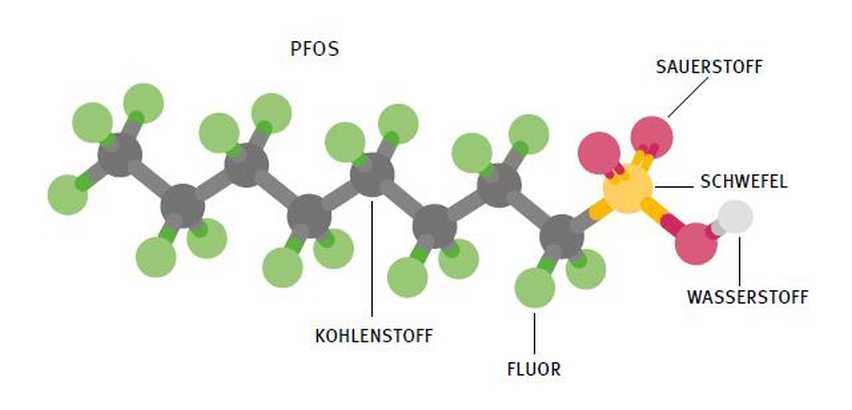Due to their water-, dirt- and grease-repellent properties, representatives of the per- and polyfluorinated alkyl substances (PFAS, also PFC - per and polyfluorinated chemicals) are found in a large number of everyday products such as outdoor jackets, Teflon pans or coffee-to-go cups, but also in fire-fighting foams. More than 4,700 different substances are now counted in the PFAS group.
Chemically, these are organic compounds with different chain lengths in which the hydrogen atoms have been partially (polyfluorinated) or completely (perfluorinated) replaced by fluorine atoms. These carbon chains still have acid or alcohol groups. The bond between the carbon and fluorine atoms can only be destroyed again with a high energy input, e.g. in waste incineration plants. Complete bacteriological or photochemical degradation is not possible.
Since these substances are not degraded in nature and thus remain in the environment for a long time, and also have a high mobility, they pose a considerable environmental problem. Some PFAS can accumulate in plants, animals and humans and are also harmful to health. PFASs can be released into the environment, e.g. from the exhaust air of industrial processes, but also from the domestic environment, e.g. from impregnation sprays, via vapours from dirt-repellent treated textiles or also via wastewater and the resulting sewage sludge, and thus enter the food chain. PFASs also become problematic because some of them bind to proteins in the human body and are sometimes passed on to the child in increased concentrations during pregnancy or breastfeeding.
In addition to Europe-wide, partially increased pollution of groundwater by PFASs, investigations showed that they were detectable everywhere in the soil. Studies in the Arctic show that PFASs can be detected in freshwater as well as in marine waters, glaciers, air and snow, but also in fish, whales, birds and even phytoplankton.
Five PFAS hotspots are currently known in Germany. At present, PFAS-contaminated soils can only be remediated by high-temperature treatment; in the case of contaminated groundwater, purification with activated carbon is possible in principle.
PFAS is just one group of many pollutants that the MuP Group plans to remove from the environment again as part of remediation measures and thus make our world a little better. Engineering for a better Tomorrow.
#EngineeringForABetterTomorrow #PFAS #mupgroup

